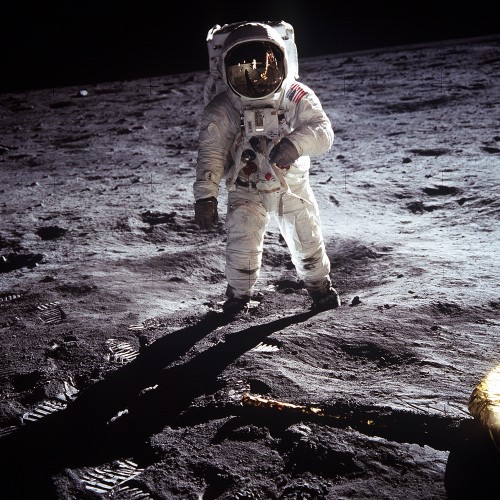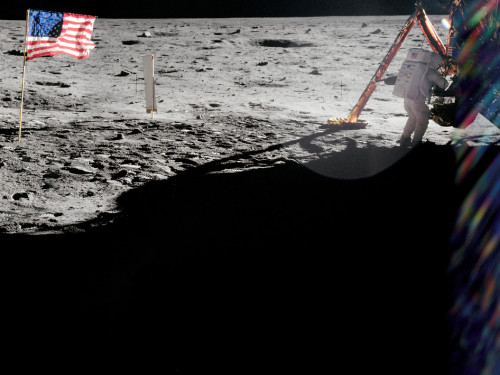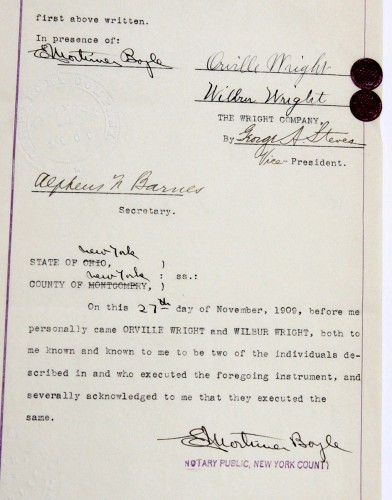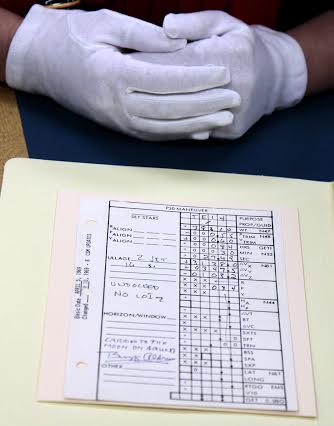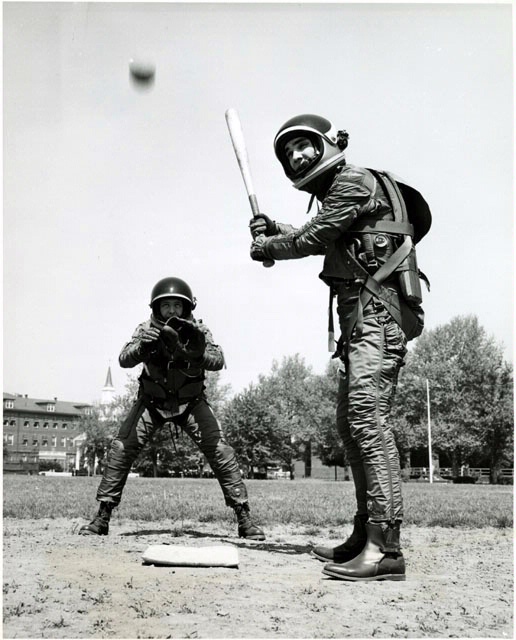
To celebrate the 50th anniversary of the first Moon landing, the Smithsonian Institution National Air and Space Museum has launched “Apollo at the Park,” a project that will place 15 replica statues of Neil Armstrong’s iconic Apollo 11 spacesuit in major league ballparks across country.
National Park in Washington, D.C. got its statue this week.
Here are the rest of the team parks where statues will appear this summer at part of Apollo at the Park.
- Atlanta Braves
- Boston Red Sox
- Chicago Cubs
- Cleveland Indians
- Cincinnati Reds
- Colorado Rockies
- Detroit Tigers
- Houston Astros
- Minnesota Twins
- New York Yankees
- Pittsburgh Pirates
- San Francisco Giants
- Seattle Mariners
- Tampa Bay Rays
What’s the connection between space and baseball and that photo above? According to the Smithsonian:
“In the late 1950s, workers at the U.S. Naval Air Material Center in Philadelphia took to a makeshift field in some interesting uniforms — B.F. Goodrich Mark IV spacesuits. The game was staged as a flexibility demonstration for the spacesuit. The final score of the baseball game is unknown, but the Mark IV would evolve to become the original Project Mercury spacesuit, a definite home run!“
And for stats fans, the National Air & Space Museum offer this:
*A ballpark stadium seat is roughly the same size at the Apollo 11 seat that Neil Armstrong, Buzz Aldrin and Michael Collins sat in for three days on their journey to the moon.
*The Apollo 11 landing site, Tranquility Base, and the lunar area that Neil Armstrong and Buzz Aldrin explored is roughly the size of a baseball diamond.
